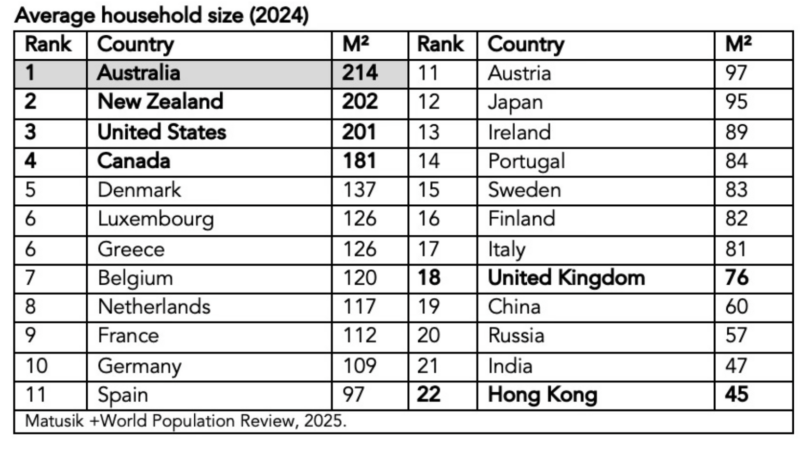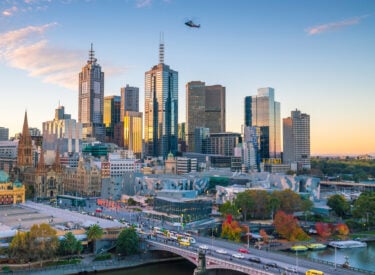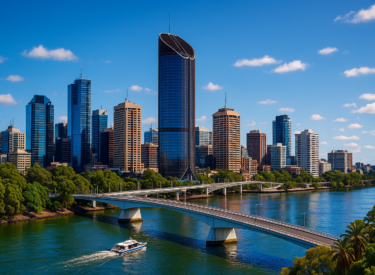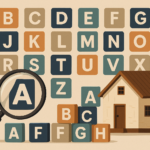Aussies like their space.
Always have.
In fact, according to the latest data from World Population Review, Australia ranks number one in the world when it comes to average house size, coming in at a whopping 214 square metres.
That’s bigger than the average home in the United States (201 m²), Canada (181 m²), or even our mates across the Tasman in New Zealand (156 m²).
For context, the global average is around 100 m².
Most European countries fall under that.
The UK, for example, averages just 76 m² per home.
In Hong Kong?
Try 45 m².

So yes, by global standards, we live large.
But here’s the rub: that era might be ending.
Australia’s large homes were built on three things: abundant land, car-centric suburbs, and decades of rising real estate wealth.
For much of the last 40 years, bigger was better.
Four bedrooms, two bathrooms, double garage, backyard for the kids and a barbie out the back.
Yet, things are shifting.
For one, land is no longer cheap, nor is it plentiful as it once was.
The cost of a typical housing lot in our major cities has skyrocketed over the past two decades, and especially since COVID-19.
At the same time, lot sizes have shrunk.
Two decades ago, the average new block in a capital city was around 600 m².
Today, it's often closer to 400 m² or less.
And they are set to decline further if you ask me.
Smaller blocks should mean smaller houses.
Second, the rise in solo living, multi-generational households, and urban infill is changing housing demand.
Not everyone wants - or needs - a big home.
And increasingly, many can’t afford it.
And those who could are being priced out by rising interest rates, tighter lending, and construction costs that are now 40% higher than pre-COVID.
Third, lifestyle is evolving.
The younger generations - Millennials and now Gen Z -value location over space.
They’d rather be close to work, a decent café and the local boutique brewery, and public transport than have a formal dining room or a second living area.
So, while Australia might still top the charts in terms of house size, don’t expect that to last.
We’re already seeing the cracks.
New home completions have slowed.
Apartment sizes are shrinking.
And more developers are offering clever designs - think split-level terraces, dual-key homes, and modular granny flats - to meet changing needs.
I’m not saying we’ll all be living in shoeboxes by, say, 2030, but the age of McMansions may be past its peak.
It’s time we started designing homes that reflect how we live today, not how we imagined life back in the 1990s.
Big homes made sense when land was more plentiful and cheaper, and fuel was 70 cents per litre.
But in 2025?
Compact, connected, and clever is the new normal.














